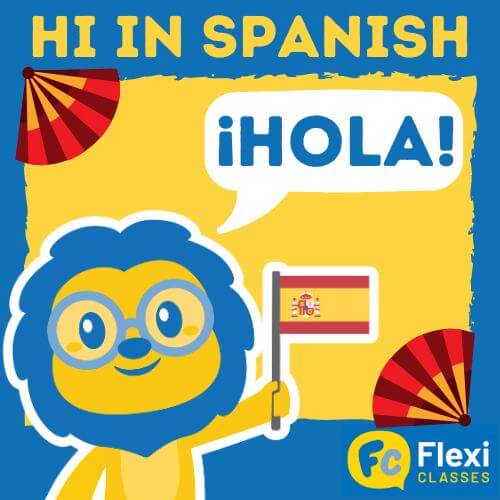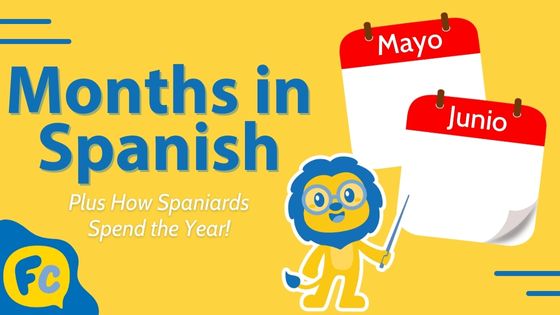8 Ways to Say Hi in Spanish – Say Hello Like a Local
Different Ways of Saying Hi in Spanish, Fit for Each Occasion!

There are many ways to say hello in Spanish, based on several factors…
Is it a formal or an informal occasion? Are you close friends or have you just met? Are you in a business meeting? Are you from the same peer group?
Each setting can determine the ‘proper’ way of greeting someone.
So, the question of whether a simple ‘hello’ (hola) greeting suffices, even in a business setting, is a perfectly valid one, given the facts.
Fret no more. In this article learn the subtleties involved in greeting someone in Spanish and further yourself into the path of conversing like a local. You know what they say… when in Rome, do as the Romans do. In this case, when in Spain…
Hi in Spanish || Hola: the Blanket Greeting Phrase
Hi in Spanish || Cómo estás vs qué tal: Casual Greetings in Spanish
Hi in Spanish || Hello in Spanish when Doing Business
Hi in Spanish || Buenas: The Versatile Greeting
Hi in Spanish || Ey,Qué Tal: Casual Greetings
Hi in Spanish || Other Ways to Say Hola and Hola History
Hi in Spanish || FAQs
Hi in Spanish || Hola: The Blanket Greeting Phrase
Is the form of greeting hola the fix-it-all when it comes to saying ‘hello’?
Well, here’s your answer: The multipurpose word hola is safe to use as a form of greeting in any given context or occasion.
Hola, plain and simple means ‘hello’ and is a blanket greeting appropriate for any setting, be it a family gathering, with friends, or even with business colleagues, etc.
The flip side is that this more traditional form of greeting hola, almost sounds too bland, devoid of any meaning or intent.
The plainness of hola is perhaps a good reason why it is often accompanied or followed by phrases such as qué tal or cómo estás, – which would translate to ‘how are you’.
The phrases hola, qué tal or hola, cómo estás seem to have a bit more emotion embedded into them, in comparison with an icier, yet just as valid, hola.
Hi in Spanish || Cómo estás vs qué tal: Casual Greetings in Spanish
Spanish are generally known to be expressive, passionate, argumentative, and direct (at times blunt) with their speech and actions.

So when in an informal setting, a greeting more in line with the Spanish character – instead of a simple hola – would perhaps be:
cómo estás – How are you?
A more colloquial ¿qué tal? (similar to saying ‘how’re you doing’) also works.
Any of the proposed alternative forms of greeting already sound warmer, as they express some interest or concern – formally or inadvertently – for the wellbeing of the person you are greeting.
Tip: Remember that when using the more formal ‘you’ (Usted), the verb estar would be conjugated differently, so the correct greeting would be cómo está or cómo está Usted.
Hi in Spanish || Hello in Spanish when Doing Business
Let’s get down to business (pun intended).
Greeting someone when in a professional context varies. So, a safe way of saying ‘hello’ are the following time-sensitive options:
Buenos días – Good morning
Buenas tardes – Good afternoon
Buenos días is certainly an acceptable greeting up until noon and buenas tardes could well extend into part of the evening.
👉 Remember that time flows in a different rhythm in Spain, as the afternoon extends well into what the rest of the Continental world would consider evening.
So, buenas noches (‘good evening’), would not really be necessary for a business context. Note that buenas noches also translates to ‘good night’.
Any of the time-sensitive greetings mentioned above are just as acceptable in any given informal occasion. For example, think of calling a friend in the morning and greeting them a ‘good morning’, buenos días, this would be perfectly normal.
Psst… Since you’re learning greetings, why not find out the Meaning of Ciao in Italian?
Hi in Spanish || Buenas: The Versatile Greeting
Buenas as a more casual form of greeting, seems to be an abbreviated version of the time-sensitive greetings: buenos días, buenas tardes or buenas noches.


Although a bit more informal than their full-named relatives (buenos días, buenas tardes or buenas noches), the more versatile and chill buenas can be used at any time of day, albeit in a more relaxed setting.
For example, let’s say a friend invites you over to their house for coffee…
When you get to their place, a casual and friendly way of saying hello is buenas (pronounced many times with emphasis on the a in the last syllable… so sounding something like buenaaas).
When entering a place, room or location, the greeting buenas is often said.
Hi in Spanish || Ey, Qué Tal: Casual Greetings in Spanish
A more relaxed and completely casual greeting, when with close acquaintances and in an informal setting, would be ey or ey, qué tal . And guess where the word ey derived from?

Yup, you guessed it. From the English word, ‘hey’.
Ey would be the parlance equivalent of a hi-five and ey, qué tal would be like saying ‘Hey, how’s it going’.
A group of buddies could easily use this form of greeting when meeting up to grab a couple of beers 🍻
Just a heads-up. The expletive ey can also be used to call someone’s attention, similar to how we would call one’s attention with a ‘hey!’.
So for example, if someone is walking down the street and about to bump into a tree, you could warn them by shouting out ey, cuidado! (hey, careful!). And they would appreciate it, for sure.

Months in Spanish 📆 || Key Vocabulary and Cultural Insights
Learn How to Say the Months in Spanish and Find Out How Spaniards Spend the Year No matter if you’re talking about birthdays, business trips or holiday plans, months are essential vocabulary you need to know in Spanish. So in…
Hi in Spanish || Other Ways to Say Hola and Hola History
Fun Fact: Proof of the widespread and long history of the Spanish use of the cómo estás form of greeting would be that in the Philippines – a former Spanish overseas province.
The word ‘hello’ in the official Filipino language, “kumusta”, is an adaptation of the Spanish greeting cómo estás, probably deriving from a mispronunciation (or local refashioning).
It’s obvious then that hola is a well-established form of greeting in many countries that have had a strong historical Spanish influence, the Philippines being a clear example, even if Spanish is no longer their dominant spoken language.
Did you enjoy this article? Why not check out:
Hi in Spanish || FAQs
Is hola ‘hi’ in Spanish?
Although we all agree that in English ‘hi’ and ‘hello’ are synonymous, ‘hi’ always comes across as a bit more informal. That said, the informal ‘hi’ equally translates to hola, although hola can be used interchangeably in both formal and informal occasions.
What are other casual greetings in Spanish?
Another very casual form of greeting would be the Spanish equivalent of ‘what’s up’, qué pasa, many times accompanied by the word tío (‘what’s up, man’). So a couple of friends running unexpectedly into each other while walking down the street could easily exclaim in surprise, ¡qué pasa, tío!
What to say instead of hola?
As the greeting hola can sometimes be a bit too bland, cold or devoid of emotion, an alternative way of greeting someone with more warmth could for example be, ¡qué alegría verte! (Happy to see you!) or ¡qué bien verte! (It’s nice to see you!).
Can the word hola be used to answer a phone call?
While in English a ‘hello’ (hola) is fairly standard when answering a phone call, in Spain, the most typical way of answering would be a sí (literally, ‘yes’) or a diga/dígame (literal translations would be ‘speak’ or ‘say’ / ‘speak to me” or ‘tell me’.
Is it Hola or Ola in Spanish?
A5: [Always remember that the (h) in hola is silent, so it phonetically sounds like ola, which (sans the h) means wave, as in a sea wave. So, better get your context right!]
Want More From LTL?
FANCY LEARNING SPANISH? Check out our online Spanish courses here.
We offer a 7-day free trial to all online students where you can study Spanish 24/7. It doesn’t end there either.
We teach over 10 of the world’s most popular languages 😎
Come and be a part of our amazing community.









